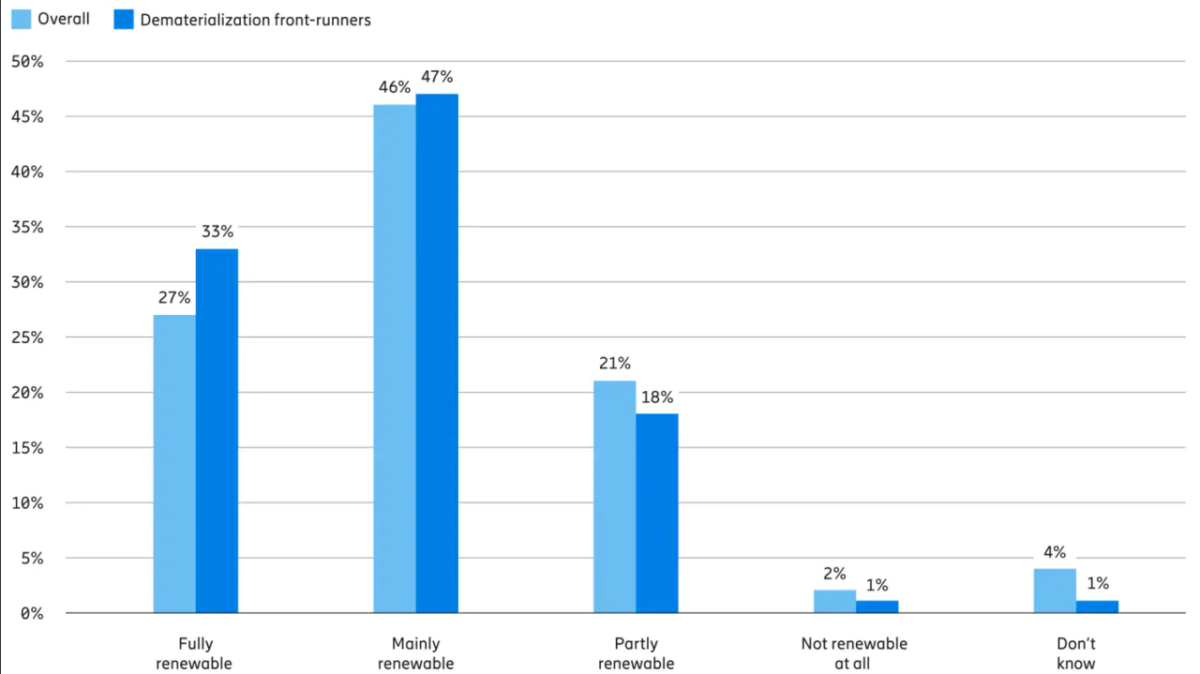How Enterprises Can Facilitate the Journey to Net Zero

Are you stressed about the environment? Are you concerned about what kind of future we are leaving to the coming generations? Are you worried about how precious little time we have to save our planet? Well, I am! We have less than 30 years to cut our global carbon emissions to net zero if we are to limit global warming to 1,5 degrees Celsius and thereby mitigate the potentially catastrophic impacts of climate change.
As outlined in the Exponential Roadmap, we need to cut emissions by 50 percent no later than 2030, then do it again by 2040 and then once more by 2050. But how can we achieve this, and how can we reassure the next generation that we’re now on the right track? A multilateral approach will be needed, and the role of each, and every part of this big puzzle will be crucial.
ICT is responsible for less than 2 percent of global emissions, while having the potential to reduce the global emissions from other sectors by up to 15 percent. This sounds promising, but everyone needs to step up in their activities towards net-zero while the potential reduction in other sectors will not happen without active decarbonization efforts. Enterprises are no exception. They too need to understand their own environmental impact, strive to limit it and eventually eliminate it! We think digitalization may help this process.
In our recent Future of Enterprises study, which I conducted together with Anders Erlandsson (Head of IndustryLab) and Patrik Hedlund (Senior Researcher), we identified several areas where enterprises are able to reduce their environmental impacts and facilitate the journey towards net-zero. In this post I would like to focus on two of these areas: energy consumption and remote working.
Energy consumptionI had believed, like many others, that the electricity consumption of data centers would increase as data transmission increased, leading to a higher environmental impact. However, this theory was debunked when a report found that data traffic between 2005 and 2015 increased about 30 times, while a typical server could show a hundredfold increase in computing capacity per amount of energy over the same time [2]. The efficiency improvements could thereby harness the impact relating to the increased data usage. This is an example of how efficient solutions could limit environmental impacts.
Apart from the benefits from increased efficiency in energy usage, the source of energy also plays an important role. That is why renewable energy is an important solution. Encouragingly, our data showed that today, more than half of the surveyed enterprises already use renewable energy for most, if not all, of their energy needs. By 2030, enterprises believe this will increase to almost three in four.
In our study, we defined the dematerialization front-runner enterprises as the top third of all surveyed enterprises which have reported the most progress in their dematerialization efforts. By dematerialization we mean substituting physical elements by digital ones. Below table depicts the results for both groups.
Remote workingIn our study, it was estimated by respondents that almost 60 percent of white-collar work will happen outside company premises by 2030 and 66 percent of decision-makers strongly believed that most meetings will be virtual by then. These expectations are likely to be due to how information and communications technology (ICT) has enabled remote working, in addition to the decrease in both commuting and CO2 emissions, as seen during the COVID-19 pandemic.
Elsewhere, 60 percent of decision-makers reported less business travel and commuting because of remote working. They also anticipated that the environmental impact of any remaining commuting will be lessened, driven by the evolution of more efficient and environmentally friendly modes of transportation. In addition, switching to more renewable energy becomes an important aspect of reaching sustainability targets. Mentioned earlier.
However, the transition towards renewable energy has its own set of challenges and barriers, with one in four decision-makers expecting that economic barriers will be too significant. Other barriers mentioned by one in five decision-makers were the lack of necessary technology and the lack of incentives and tax breaks. Companies supporting their employees could facilitate this transition, and already today approximately half of all decision-makers are satisfied with how their enterprises are offering, for example, EV charging using renewable energy at their respective company parking lots.
On the topic of energy efficient solutions, we could also take a closer look at cloud technology and how, when used the right way, it can be another enabler of reductions in both energy consumption and environmental impact. Overall, 80 percent of ICT decision-makers expect significant energy savings for their IT environment due to the usage of multi-cloud solutions by 2030, not only for their own enterprise but for society as a whole.
So, while I might still be stressed and worried about the future, it also feels amazing to work in the ICT sector – an industry that is enabling remote working and facilitating the transition toward a more sustainable world. The journey towards a net-zero future has only just begun, and we are truly running out of time. Applying technology for a sustainable and resilient future is an undeniable responsibility that we all need to take, enterprises and employees alike.

